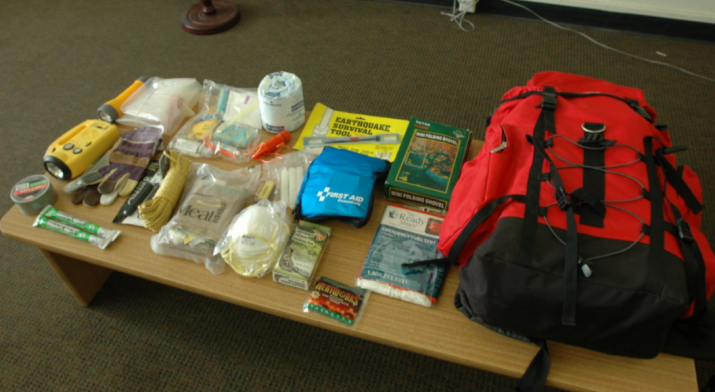
10 Essential, must-have items to have before the next natural disaster strikes
Sunday, October 29, 2017 by Michelle Simmons
http://www.preparedness.news/2017-10-29-10-essential-must-have-items-natural-disaster.html

Being prepared for a natural disaster is important, especially if you want to survive. Disaster preparedness starts by having an emergency bag at home. However, do you know which are the most important items that you must have in case of a natural disaster? Here is a list of 10 essential, must-have items in case of a natural disaster, according to an article by AlwaysWellWithin.com.
- Supply of water – One of the most important items that you need to have in your disaster preparedness kit is water. After a disaster, acquiring clean drinking water may become more difficult. One person needs at least one to two gallons of water a day. A gallon of water should be enough for a person for three days, in case of evacuation. If you can, try to keep a supply of two weeks’ worth of water at home.
- Supply of food – Food is essential to survival. Foods that are easy to prepare and are non-perishable, such as canned soup, meat, vegetables, and fruits, should be included in your disaster preparedness kit. Also include a mechanical can opener in the kit for opening the canned goods. There should be enough food supply for three days in case of evacuation and a two-week supply at home. For food preparation, you must have a simple barbecue, charcoal, starter fuel or one propane unit with two canisters of propane, and some basic cooking utensils ready. Also, do not fail to include waterproof matches or lighters. (Related: ORGANIC SURVIVAL FOOD: Health Ranger launches non-GMO, certified organic survival food instant meals delivering real nutrition, not junk calories)
- Shelter essentials – If you’ve lost your home or need to evacuate, you’d require an emergency blanket, a sleeping bag or regular blankets, and a tent, so better include these items in your disaster preparedness kit.
- Medical supplies – It is important to prepare a first aid kit, a supply of important medicines for at least one week, and other essential medical supplies such as an inhaler. A first aid kit may include sterile gauze pads, dressings, roller gauze bandages, adhesive tape, non-latex gloves (just in case of latex allergies), hand wipes, hand sanitizers, a ready-to-use ice pack, tweezers, scissors, and a face shield. You may also want to add items such as emergency medications that your family may need, topical anesthetic spray for burns or itches, oral antihistamines for allergic reactions, a triangular bandage or piece of cloth, a thermometer in case of fever, and over-the-counter medicines for common sicknesses such as diarrhea, nausea, and headaches.
- Light – There is a high probability that a power outrage will occur either before, during, or after a natural disaster. When there is no electricity, there will be no light, so prepare by packing flashlights, extra batteries, and extra bulbs in your kit. You can also include candles and waterproof matches or lighters.
- Radio – Communication is important in emergencies. Having a battery-powered AM/FM radio is important in case of a natural disaster. You cannot rely on your mobile phones during emergencies because there may be no cellular signal or your phones may run out of battery. With radios, you can at least listen to news and stay updated about the happenings in your area.
- Cash – Prepare at least $50 on hand in small bills and phone change as cash machines do not work without electricity.
- Cellphone and charger – There is a possibility that a mobile phone will not work in a disaster, but it might also be your line to life-saving support.
- Sanitation and personal hygiene items – Include toilet paper, toothbrush, soap, and other important sanitary items in your survival kit.
- Personal documents – Save and bring with you your personal documents, such as driver’s license, birth certificate, passports, insurance policies, proof of address or lease, medication list and medical information, copies of credit cards, checks.
Sources include:
Tagged Under: Tags: disaster preparedness, disaster preparedness kit, essential items during a disaster, survival, survival kit





